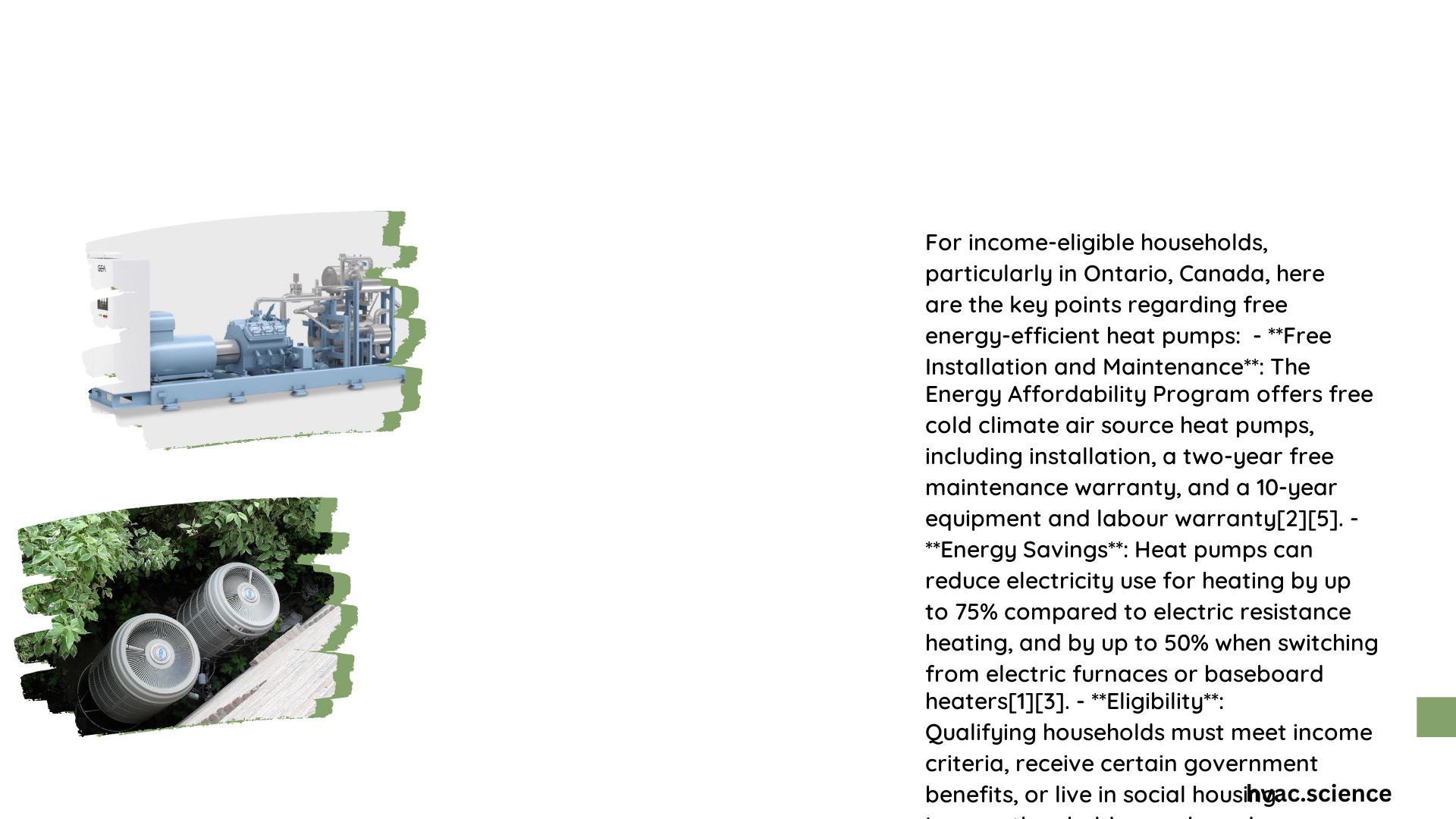Heat pump free energy represents a revolutionary approach to sustainable heating and cooling, leveraging thermodynamic principles to extract ambient thermal energy from air, ground, or water sources. By transferring heat rather than generating it through combustion, heat pumps can achieve remarkable efficiency levels, potentially delivering 3-5 units of thermal energy for every unit of electrical input, making them a game-changing technology in renewable energy systems.
What Makes Heat Pump Free Energy Unique?
How Do Heat Pumps Extract Free Energy?
Heat pumps operate on a fundamental principle of moving thermal energy from one location to another, essentially “harvesting” free environmental heat. This process involves:
- Refrigerant Circulation: A specialized fluid absorbs low-temperature heat
- Compression Mechanism: Increasing refrigerant temperature through mechanical compression
- Heat Transfer: Releasing captured thermal energy into target spaces
Key Performance Metrics
| Performance Indicator | Typical Range | Significance |
|---|---|---|
| Coefficient of Performance (COP) | 3.0 – 5.0 | Measures energy efficiency |
| Seasonal Performance Factor (SPF) | 2.5 – 4.5 | Reflects year-round performance |
| Energy Savings Potential | 50-75% | Compared to traditional heating systems |
What Determines Heat Pump Efficiency?
Several critical factors influence heat pump free energy generation:
- Environmental Temperature
- Higher ambient temperatures increase system efficiency
- Ground source systems typically perform more consistently
-
Air source heat pumps show greater variability
-
System Design
- Proper insulation
- Appropriate heat distribution infrastructure
- Correct sizing of equipment
Can Heat Pumps Provide Truly Free Energy?
While heat pumps don’t generate completely free energy, they dramatically reduce energy consumption by:
- Transferring existing thermal energy
- Requiring minimal electrical input
- Operating with high conversion efficiency
- Minimizing energy waste
Economic Considerations for Heat Pump Implementation
Installation Costs
- Initial investment: £7,000 – £14,000
- Potential government incentives
- Long-term energy savings
Operational Expenses
- Low maintenance requirements
- Reduced utility bills
- Predictable performance metrics
Technical Challenges in Free Energy Generation
Heat pump systems face several implementation challenges:
- Temperature Limitations: Performance drops in extreme cold
- Initial Capital Investment: Higher upfront costs
- Complex Installation: Requires specialized expertise
- Grid Dependency: Electrical input still necessary
Future Innovations in Heat Pump Technology
Emerging developments promise enhanced free energy generation:
- Advanced refrigerant technologies
- Improved compression mechanisms
- Smart control systems
- Integration with renewable energy sources
Conclusion

Heat pump free energy represents a sophisticated approach to sustainable heating, offering significant potential for reducing carbon emissions and energy consumption. By understanding its principles, performance metrics, and technological nuances, consumers and industries can make informed decisions about implementing these innovative systems.
Practical Recommendations
- Conduct thorough site assessment
- Consult professional energy consultants
- Consider local climate conditions
- Evaluate long-term financial benefits
References:
– Heat Pump COP Calculation – OpenEnergyMonitor
– Heat Pump Efficiency Guide
– Renewable Energy Technologies
